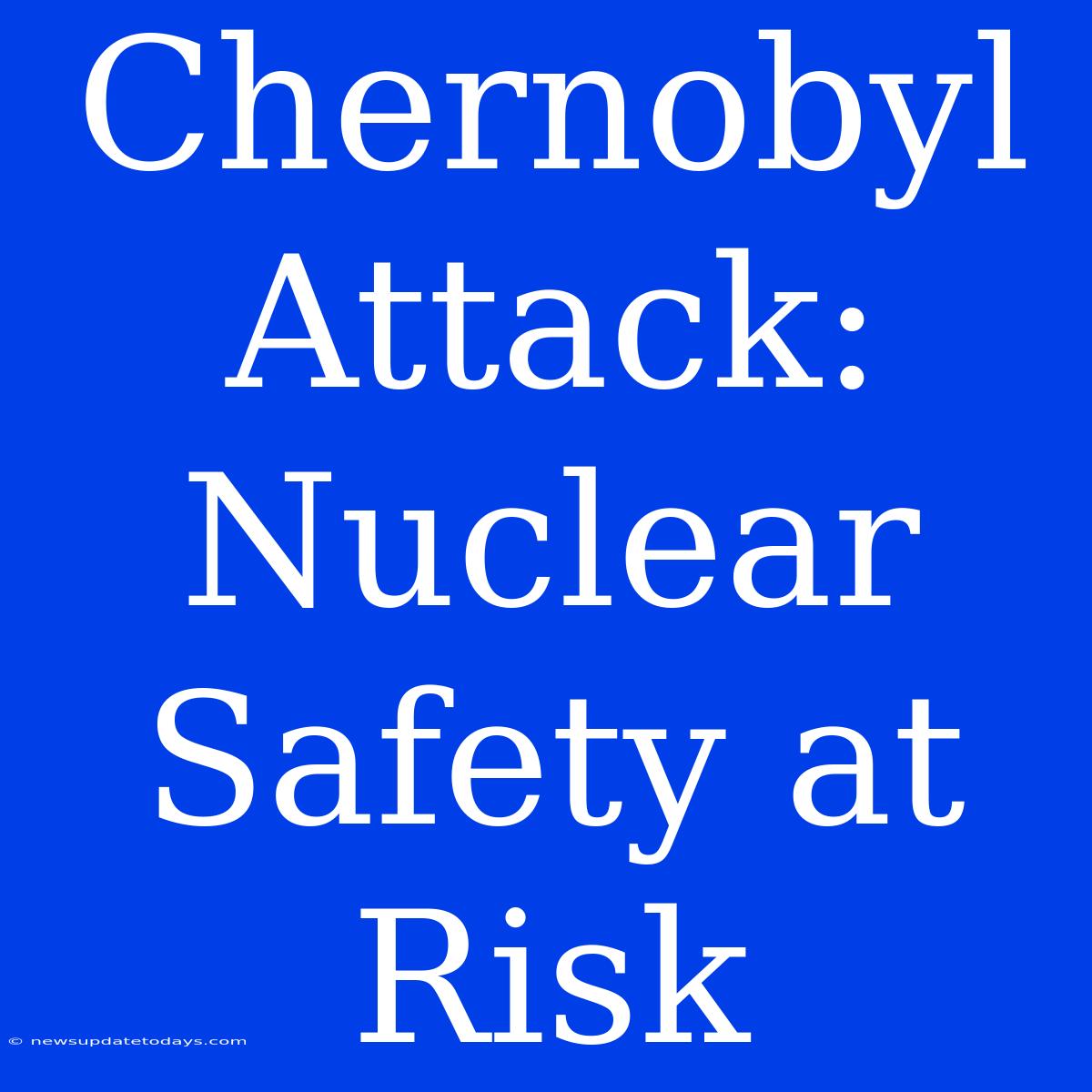Chernobyl Attack: Nuclear Safety at Risk - A Wake-Up Call for Global Security
The recent attack on the Chernobyl nuclear power plant serves as a stark reminder of the fragility of nuclear safety and the potentially catastrophic consequences of armed conflict in areas with nuclear infrastructure. This incident, far from being an isolated event, highlights the urgent need for strengthened international protocols and a renewed commitment to preventing future attacks on nuclear facilities worldwide.
The Perils of War Near Nuclear Sites
The Chernobyl disaster, a catastrophic nuclear accident in 1986, remains etched in global memory. The recent attack, though not resulting in a repeat of the original meltdown, underscores the inherent risks associated with military action near nuclear facilities. Damage to the plant's infrastructure, including power lines and radiation monitoring systems, compromises containment and increases the risk of accidental release of radioactive materials. This poses a significant threat not only to the immediate vicinity but also to potentially wider regions, depending on the prevailing winds and environmental conditions.
Beyond Chernobyl: A Global Threat
Chernobyl isn't the only nuclear facility vulnerable to attack. Numerous nuclear power plants and storage sites for nuclear waste exist globally, many located in politically volatile regions. The attack on Chernobyl serves as a cautionary tale, demonstrating the potential for conflict to escalate into a nuclear catastrophe with far-reaching consequences. The international community must take proactive steps to mitigate these risks.
Strengthening Nuclear Safety Measures: A Multifaceted Approach
Addressing the risks requires a multifaceted approach:
-
Enhanced Security Measures: Strengthening physical security at nuclear facilities is paramount. This includes improved perimeter defenses, advanced surveillance systems, and better-trained security personnel.
-
International Cooperation: Robust international cooperation is crucial for sharing best practices in nuclear safety and security. This requires open communication and coordinated efforts among nations to assess vulnerabilities and implement effective countermeasures.
-
Diplomatic Solutions: Preventing conflict is the most effective way to protect nuclear facilities. Diplomatic efforts to de-escalate tensions and resolve disputes peacefully are vital in regions with nuclear infrastructure.
-
Emergency Preparedness: Comprehensive emergency preparedness plans are essential to minimize the impact of any accidental release of radioactive materials. This includes robust evacuation procedures, effective communication systems, and access to medical countermeasures.
A Call for Action
The attack on Chernobyl should serve as a catalyst for decisive action. The world cannot afford to be complacent. We must invest in robust nuclear safety measures, foster international cooperation, and prioritize diplomatic solutions to prevent future attacks on nuclear facilities. The potential consequences of inaction are simply too dire to ignore. The future of nuclear safety, and indeed global security, depends on our collective commitment to preventing such incidents from happening again.

